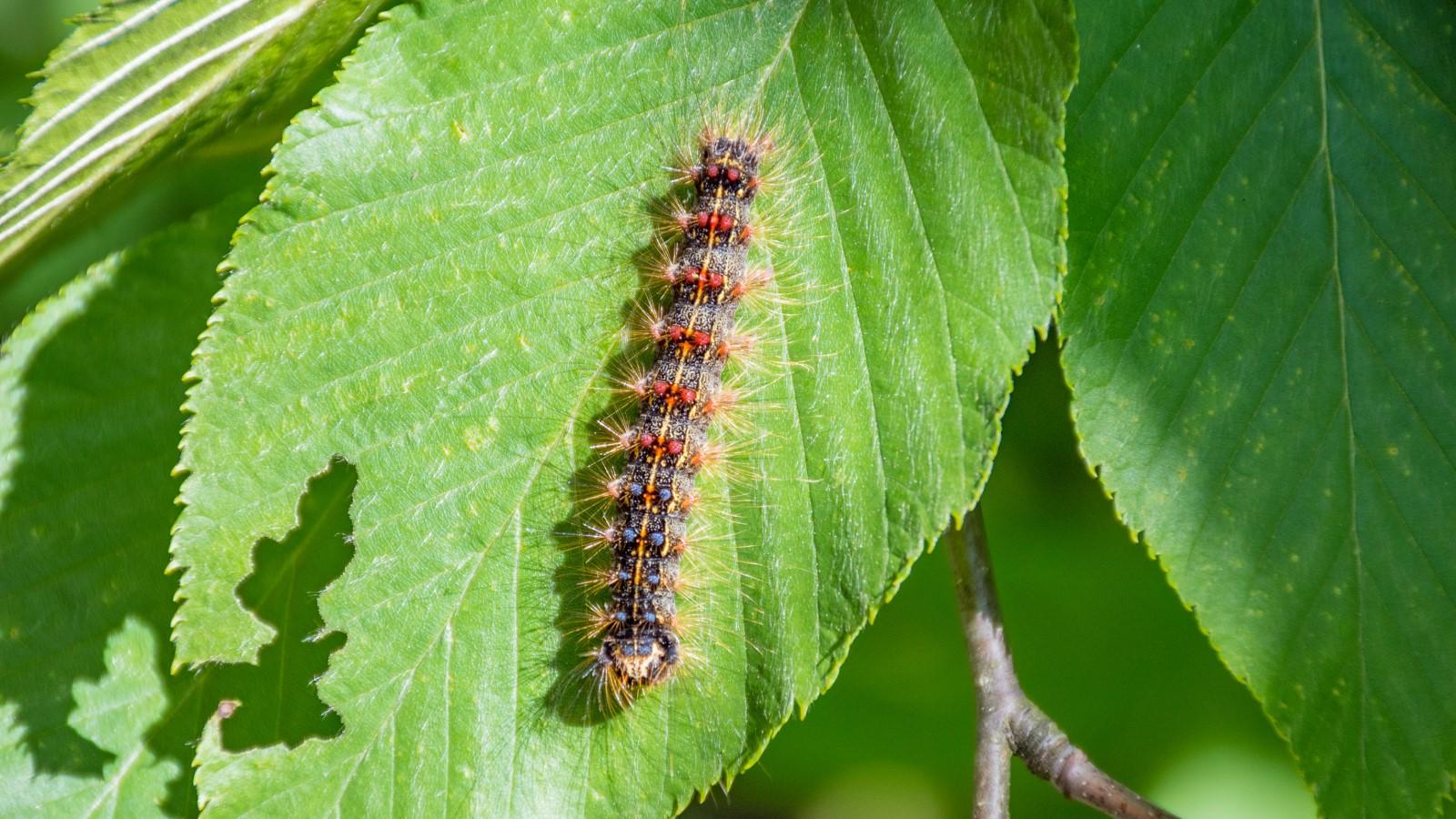Key points
- The common name of Gypsy moth (Lymantria dispar) has been officially changed to spongy moth.
- Spongy moth, native to Europe, was introduced and accidentally released in Massachusetts in 1869.
- Spongy moth is a serious pest of oak trees in Maryland, and is considered a major forest pest. The first serious infestation in Maryland dates back to the 1980s.
- Predators, parasites, and diseases attack spongy moth caterpillars, but the Maryland Department of Agriculture (MDA) continues to survey for this pest to monitor populations. Areas with high populations are treated in cooperation with the USDA Forest Service, MDA, local county governments, or landowners. For details, search the MDA website (https://mda.maryland.gov/).
- Spongy moth caterpillars feed in May and June. They prefer oak (Quercus), but will also feed on sweetgum (Liquidambar), linden (Tilia), willow (Salix), birch (Betula), apple (Malus), alder (Alnus), boxelder (Acer negundo), hawthorn (Crataegus), and blue Colorado spruce (Picea pungens). A large caterpillar population can defoliate acres of trees.
- Deciduous trees suffering more than 50% defoliation for two consecutive years will be significantly weakened and may die.
Spongy moth life cycle and damage

- Egg hatch begins in late April or early May, depending on the temperature.
- Young caterpillars are black, hairy, and only one-sixteenth of an inch long. Very young caterpillars are carried by the wind from tree to tree.
- Spongy moths do not spin webs or make silken nests in trees, unlike tent caterpillars and webworms.
- As they grow, caterpillars change color, and by the third instar (development stage), the caterpillars are about five-eights of an inch long and have 10 blue spots down their backs.
- Young caterpillars spend most of their time in the treetops feeding. Their chewing damage looks like shot holes in the leaves, and is not easily visible from the ground.
- Caterpillars grow up to 2 or 2.5 inches in length, and at that point have 5 pairs of blue dots and 6 pairs of red dots on their backs. These larger caterpillars can consume entire leaves to the midrib (central leaf vein).
- Late-stage caterpillars are responsible for most of the leaf loss in trees, and are more difficult to control with pesticides than young caterpillars.
- When the caterpillars are finished feeding, they migrate out of the trees in search of hiding places to pupate. The caterpillar changes into a smooth, teardrop-shaped, dark brown pupa that is about one inch long. They may be found attached to just about anything around the outside of the home, including tree trunks, cars, trailers, around door frames, on the siding overhang above the foundation, and in many other protected locations.
- Adult moths emerge from late June to late July.
- Female moths have white wings with small dark markings (wingspan is two inches), and do not fly.
- Male moths are brown with black markings and do fly. They are one of the few daytime-flying moths found in Maryland.
- Moths do not feed. They only live a short time, during which they mate and the female lays eggs in masses. Egg masses are felt-like, tan, oval, and about one and one-half inches long. They are laid in bark crevices, on the undersides of branches, on the ground under loose stones, boards, firewood, lawn furniture, campers, and many other places.
- There is one generation per year, and winter is spent in the egg stage.
